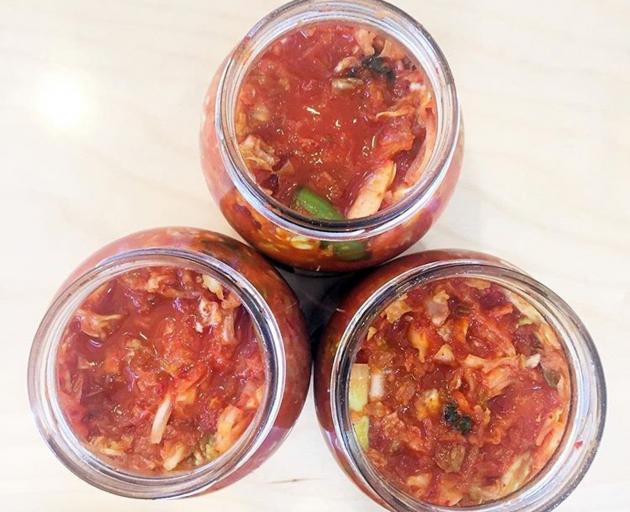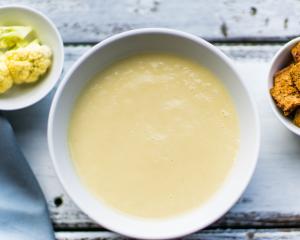Your gut is an amazing organ that is home to many systems responsible for some of the most important jobs in our bodies, writes Jamalia Edwards.

The gut-brain connection is undeniable. Although we understand and accept that the brain communicates with the rest of our body, what a lot of people aren’t aware of is that the gut actually talks back.
You know that ‘‘gut feeling’’ when something isn’t right, or the times your ‘‘stomach went into knots’’, these are examples of somatic experiences evidencing the gut-brain conversation.
A healthy gut is a healthy mind, and so gut health goes far beyond the physical, impacting our mental wellbeing as well.
In order to support these systems and processes, we need to build and maintain a healthy gut biome. Gut biome, or gut bacteria, are the living organisms that inhabit our gastrointestinal tract.
What can we do to improve our gut health and support it to do these important jobs?
There are two steps to get you gut back into balance: reduce inflammation and rebuild the gut biome.
One way to reduce inflammation, is to avoid processed foods and foods high in sugar, and instead focus on eating whole, unprocessed, real foods.
Once the inflammation is taken care of, you can then focus on rebuilding the gut biome.
Foods to include in your diet to promote a healthy gut include bone broth, gelatin or collagen, raw cultured dairy, fermented vegetables, coconut kefir, kombucha, healthy fats (avocado, eggs, nuts and seeds, quality oils) as well as sprouted seeds and legumes.
Alongside the dietary probiotics and gut loving foods, you can also supplement with a quality probiotic.

Ruby sauerkraut
Makes 5-6 jars
Ingredients
1 large white or red cabbage
1 Tbsp of caraway seeds
2 tsp of flakey sea salt or pink Himalayan salt
Method
1. Finely slice the cabbage — with a knife is fine or to speed up the process use the fine slice attachment on your food processor.
2. Mix in a large bowl with the salt and caraway seeds.
3. Smash with a mallet, or strong potato masher until the liquid starts coming out of the cabbage and it starts looking more translucent. This process can take 20 minutes or so depending on your strength! You can alternate between smashing the cabbage, and using your hands to squeeze and mix the cabbage. This part can be quite therapeutic!
4. When you squeeze a handful of the cabbage and liquid drips out generously, you are ready to jar.
5. Push the cabbage down into jars until liquid covers the top of the cabbage. This is really important, if the cabbage is exposed to oxygen it will grow mould and the whole jar will be inedible. If there is not quite enough liquid, keep smashing and squeezing it for a little longer.
6. Leave in a dark cupboard for about a week, or until the desired ‘‘sour-ness’’ is acquired. Then transfer to the refrigerator.

Kimchi
Ingredients
1 savoy cabbage
¼ cup sea salt or pink Himalayan salt water
4 cloves of grated garlic
1 tsp grated peeled fresh ginger
1 tsp granulated sugar
2 Tbsp fish sauce
3 Tbsp Korean red pepper flakes (gochugaru)
150g daikon radish, peeled and grated
2 green onions, trimmed and cut into 2½cm pieces
Method
1. Cut the cabbage into quarters. Cut the cores from each piece. Cut each quarter crosswise into 3cm strips.
2. Place the cabbage in a large bowl and massage the salt into the cabbage until it starts to soften slightly. Add enough water to cover the cabbage. Put a plate on top of the cabbage and weigh it down with something heavy, like a jar or can of beans. Let stand for 1 hour.
3. Rinse and drain the cabbage.Rinse the cabbage under cold water 3 times. Set aside to drain in a colander for 15 to 20 minutes. While it drains, make the spice paste.
4. Add the garlic, ginger, sugar, and fish sauce and stir together until it forms a smooth paste. Stir in the gochugaru and set aside until the cabbage is ready.
5. Add the daikon radish and spring onions to spice paste.Gently squeeze any remaining water from the cabbage and add it to the spice paste.
6. Using your hands, work the paste into the cabbage until it is well coated.
7. Pack the kimchi into clean, dry jars. Press down on the kimchi until the brine (the liquid that comes out) rises to cover the cabbage, leaving at least a couple of centimetres of space at the top. This stage can be challenging, if you are really struggling to get enough brine, you can leave it for an hour or so and come back to it.
8. Let it ferment for 3-4 days in a cool, dark place.
9. Check the kimchi once a day, opening the jar and pressing down on the vegetables with a clean finger or spoon to keep them submerged under the brine. When the kimchi's taste is to your liking, transfer the jar to the fridge.












